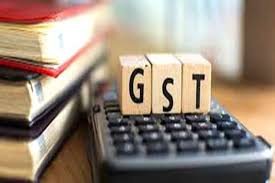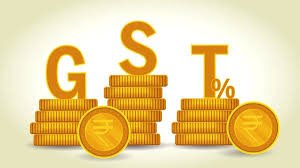GST Rate Rationalisation After Item-wise Analysis
In a significant move aimed at streamlining the Goods and Services Tax (GST) regime, the Government of India has initiated a thorough item-wise analysis to rationalize GST rates. This decision comes as part of ongoing efforts to simplify the tax structure and boost compliance across various sectors. The GST Council, chaired by the Finance Minister, undertook a comprehensive review to identify goods and services where rate adjustments could enhance efficiency and reduce tax anomalies.
Background of GST Rate Rationalisation
The GST, introduced in July 2017, aimed to create a unified tax system across India, replacing multiple indirect taxes levied by the central and state governments. However, since its implementation, stakeholders have raised concerns about the complexity and varying tax rates applicable to different goods and services. The government has periodically reviewed these rates to address industry concerns and improve the overall tax framework.

Why this News is Important
The decision to rationalize GST rates after an item-wise analysis holds significant importance for various stakeholders and the economy at large.
Efficiency in Tax Structure
The move aims to streamline the GST regime, making it more straightforward and efficient. By reducing complexities and anomalies in tax rates, businesses can better understand and comply with tax requirements.
Boost to Economic Growth
Rationalizing GST rates is expected to stimulate consumption and investment. Lower rates on essential commodities could reduce the cost of living for consumers, potentially increasing disposable income and boosting demand.
Improving Business Competitiveness
SMEs and industries affected by high GST rates stand to benefit from reduced tax burdens. Simplified compliance procedures will ease operational challenges, promoting growth and competitiveness in the market.
Government’s Commitment to Reform
The decision underscores the government’s commitment to economic reform and responsiveness to industry feedback. Regular reviews and adjustments in GST rates demonstrate a proactive approach to addressing sector-specific issues and overall economic stability.
Impact on Consumer Welfare
Lowering GST rates on essential goods could alleviate the financial burden on consumers, contributing to overall welfare and standard of living improvements across the country.
Historical Context:
Since its introduction in July 2017, the Goods and Services Tax (GST) has been a cornerstone of India’s tax reforms. Designed to replace a complex web of indirect taxes, GST aimed to unify the Indian market and create a seamless tax structure. However, challenges emerged as varying tax rates were applied to different goods and services based on their classification.
Over the years, stakeholders have voiced concerns about the multiplicity of GST rates, which led to discussions on rationalization. The GST Council, comprising representatives from the central and state governments, periodically reviews tax rates to address industry concerns and ensure uniformity in tax application.
The latest initiative involves a meticulous item-wise analysis to identify sectors where GST rates can be rationalized. This process includes evaluating the economic impact, revenue implications, and consumer benefits associated with potential rate adjustments.
Key Takeaways from GST Rate Rationalisation
| Serial Number | Key Takeaway |
|---|---|
| 1. | Reduction in GST rates for essential commodities to alleviate consumer burden. |
| 2. | Simplification of compliance procedures for businesses, especially small and medium enterprises (SMEs). |
| 3. | Efforts to harmonize rates across sectors to promote uniformity and clarity. |
| 4. | Impact assessment on revenue collection and potential benefits for economic growth. |
| 5. | Future implications for inflation control and market stability. |
Important FAQs for Students from this News
Q1: What is GST rate rationalization?
A: GST rate rationalization refers to the process of reviewing and adjusting tax rates on goods and services to simplify the tax structure and promote economic efficiency.
Q2: Why is GST rate rationalization important?
A: It helps in reducing tax anomalies, making compliance easier for businesses, and potentially lowering costs for consumers.
Q3: Who decides on GST rate changes?
A: The GST Council, chaired by the Finance Minister and comprising representatives from the central and state governments, decides on GST rate adjustments.
Q4: What are the benefits of GST rate rationalization for SMEs?
A: SMEs benefit from reduced tax burdens and simplified compliance procedures, which enhance their competitiveness and growth prospects.
Q5: How does GST rate rationalization impact consumers?
A: It can lead to lower prices for essential commodities, thereby improving consumer affordability and standard of living.
Some Important Current Affairs Links














